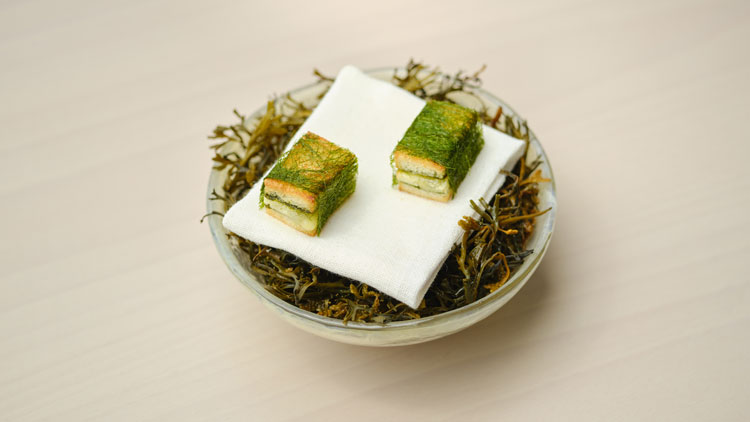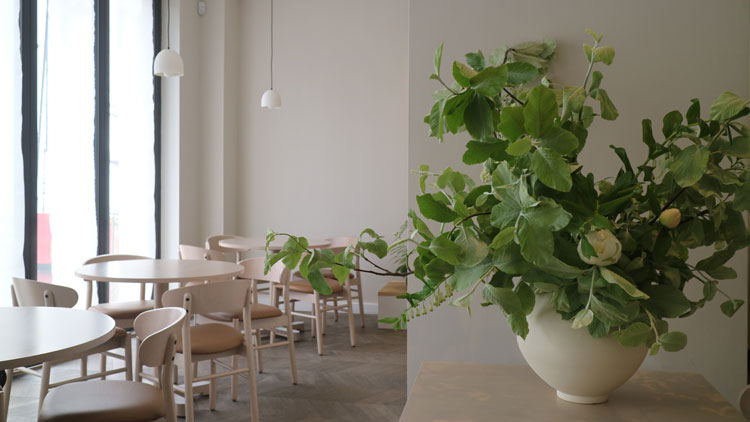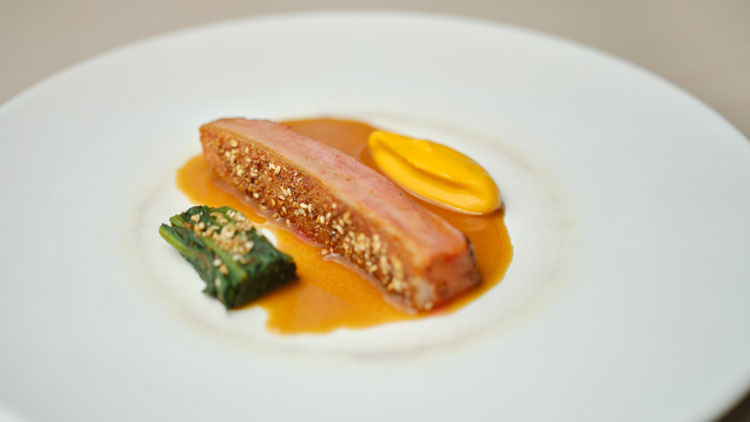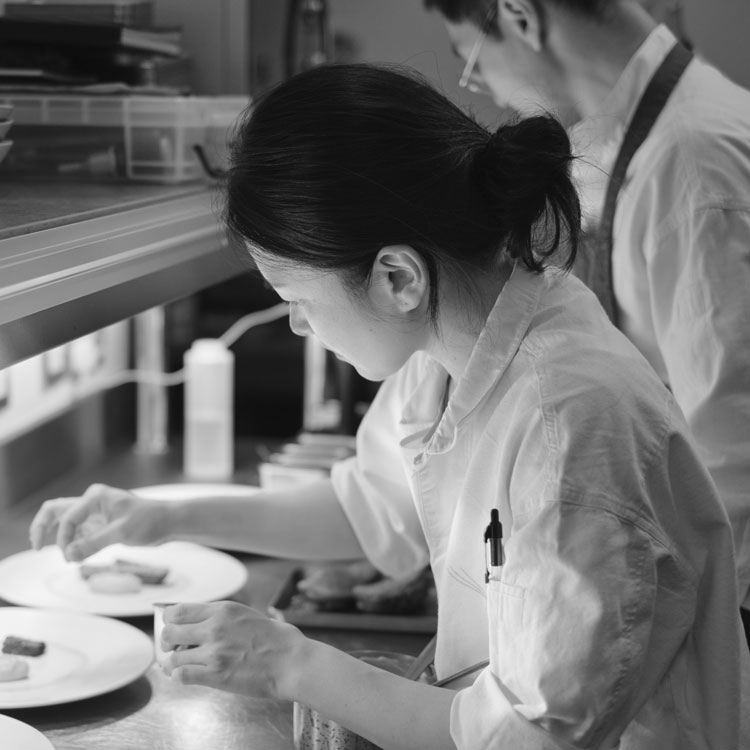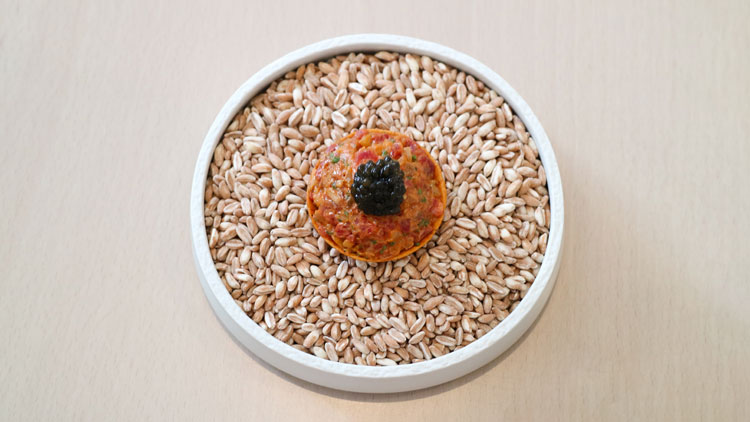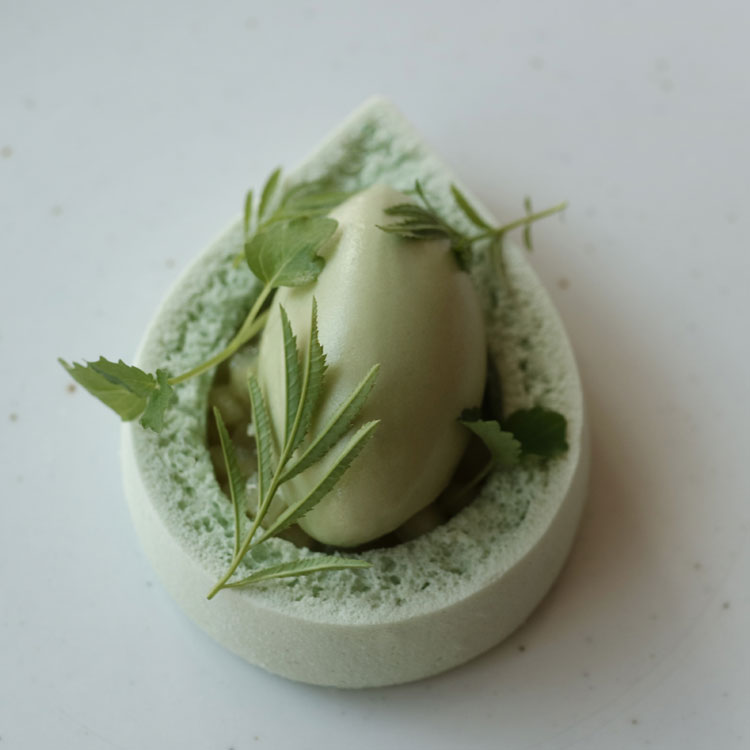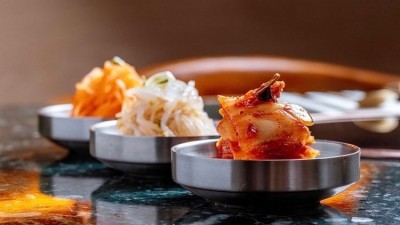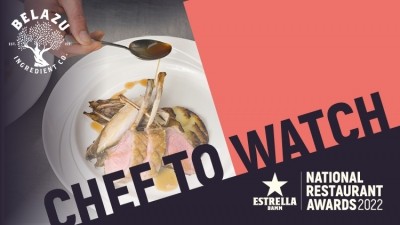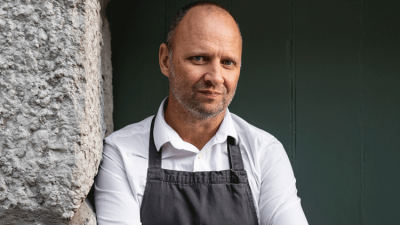Moving the needle: the duo behind SE1’s Sollip
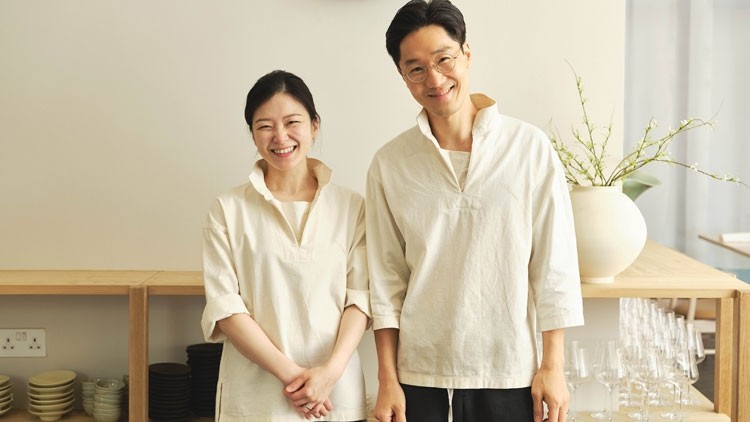
Sollip isn’t a Korean restaurant, although it is often perceived as such. On a backstreet just south of London Bridge station, the 25-cover venue offers an ambitious and thoughtful menu of modern French cuisine that utilises some ideas and specialist ingredients that have their origins in husband-and-wife duo Woongchul Park and Bomee Ki’s native South Korea (the restaurant takes its name from the Korean word for pine needle).
“It’s understandable that people assume Sollip is a Korean restaurant,” says Bomee. “We are two South Korean chefs that have opened a restaurant and the space does have a Korean feel. We do get some guests that come expecting Soillip to be a ‘Korean fine dining’ restaurant. So, there is the potential for disappointment. But usually when we explain our approach, it’s fine.”
“We're a European restaurant inspired by Korea, that's probably the best way of putting it,” adds Woongchul.
The pair effectively co-write Sollip’s nine-course, £135 tasting menu with Woongchul - whose training and experience is largely in the main kitchen - focusing on the savoury side of the menu and Bomee – a trained pastry chef - overseeing the sweets. That said, the pair have input across the menu, in some cases giving each other ideas to develop for their respective areas.
“We're a European restaurant inspired by Korea, that's probably the best way of putting it"
A rather idiosyncratic approach, it must be said, but it’s one that’s clearly working: Sollip was awarded its first Michelin star last year. “Ki and I are very different people, but we are 99% similar in terms of our cooking style and palate,” continues Woongchul. “Usually, we work by giving each other ideas to develop for their section and then we taste and give each other honest feedback. We talk about food constantly.”
An oft-changing menu
And discuss dish development they must, with the majority of Sollip’s menu changing four times a year, which is quite something given the attention to detail that goes into each dish. French-leaning tasting menus with a smattering of Asian ingredients are far from a novelty these days, but Sollip’s hits different thanks to its co-creators’ elevated understanding and obvious advantage when it comes to sourcing the good stuff.
Key dishes on the current menu include an impossibly-delicate toasted sandwich made with gamtae seaweed and Caerphilly; a largely traditional beef tartare enlivened by the spicy funk of homemade gochujang; daikon tarte tatin served alongside a puree made with potato and burnt hay; and pain perdu with seoritae (Korean blackbean) ice cream.
“We like the Korean influence to be subtle. We were both trained in French cuisine and that is our passion. But, of course, we did grow up with Korean food, so we have that heritage and knowledge,” Woongchul says.
Korea progress
The couple's origin story involves much back and forth between London, South Korea and - in the case of Woongchul - the US. They both grew up in major Korean cities - Bomee in Gwangju in the southwest and Woongchul in Cheonan-si, which is close to Seoul - but both completed their education in the South Korean capital.
Contrary to the narrative presented elsewhere, their eyes did not lock over a steaming pot of consommé - or some such - at London's Le Cordon Bleu, although that is where they first met.
"I knew her to say hi to. But we were on different courses, she was doing Pastry and I was doing Cuisine," recalls Woongchul, who enrolled at Le Cordon Bleu having already graduated with a degree in culinary arts in South Korea, ticked off his national service and worked for a year or so cooking at big corporate hotels in the US including the Hyatt Regency Boston.
Though the kitchens he moved through in the States were more geared towards big numbers than haute cuisine, it was the US that opened his eyes to a new world of big-name chefs, French cuisine and Michelin stars.
Bomee, who is four years her husband's junior, made the decision to train as a chef later having initially studied optometry.
"It is a golden period for food in Seoul and South Korea more widely"
After finishing up at Le Cordon Bleu, Woongchul returned to the US for another year while Bomee went straight back to Korea. The pair reconnected at Jeju Island restaurant Milieu, which was part of a new wave of restaurants run by ambitious young Korean chefs that had trained in Europe and the US. "The restaurant scene in Korea has changed a great deal over the past decade or so," Woongchul says. "When I was studying for my degree, there were very few progressive restaurants, but the arrival of the Michelin Guide Seoul in 2016 was a game changer. Restaurants have been evolved largely by people of our generation. It is a golden period for food in Seoul and South Korea more widely."
Woongchul and Bomee were married in South Korea in 2013 but soon returned to London to further hone their skills with Woongchul working at Koffmann's at The Berkeley and later at The Ledbury and Bomee at The Arts Club.
In 2015 they returned to Korea to once again work at Milieu and start a family but a few years in got itchy feet once again. "We slowed down a bit. It was a very happy time for us. But one day we decided that we did not want to live like that. It was very safe,” says Bomee. “We knew deep down that we wanted to do something more ambitious.”
Risking it all
Ambitious is one way of putting it. In the summer of 2019, Woongchul headed to London alone to find a restaurant and a family home. Neither set of parents was thrilled about the pair uprooting their family, selling most of their possessions and spending all their savings on a risky overseas business venture (Sollip has no backers).
“They were very worried about us and their grandchildren. But they knew they could not stop us,” says Woongchul. “The culture in Korea is a bit different to here. Parents don’t tend to think of their children as being adults, even if they have had kids of their own.”
He found a site and a place to live about 10 minutes’ walk away and returned to Korea to collect Bomee and their two children. Their parent’s worst fears were presumably confirmed when Sollip’s opening was derailed by the pandemic.
Quite how the pair managed to stay solvent during the tumultuous few years that followed remains a mystery. Sollip traded quite successfully over the summer of 2020 offering an a la carte menu rather than the tasting menu that was originally planned (a glowing review from Financial Times critic Tim Hayward helped).
“We were worried that people would not want to spend a long time in the restaurant, especially as Sollip is quite a small place,” explains Bomee.
Setting up shop
During the second and third national lockdowns Sollip was transformed into an upmarket Korean grocery store offering a mixture of homemade foods including kimchi, Korean foods and Korean ceramics. Though it helped keep Sollip on people’s minds diversifying into retail generated very little income.
“A good day was less than £200. It was a very difficult period. We felt unlucky and were very depressed early on, but we managed to snap out of it and start being proactive. Even though the grocery didn’t make much, it felt good to be doing something,” Bomee says.
"We felt unlucky and were very depressed early on, but we managed to snap out of it and start being proactive"
Following the third lockdown Sollip relaunched with the tasting menu that was originally planned. It went over well, but – in common with a lot of other places – Sollip’s post-pandemic recovery was stymied by a lack of staff. Virtually unaided in the kitchen, the pair were forced to work extreme hours and, towards the end of 2021, the stress and exhaustion of opening an ambitious fine dining restaurant in the midst of global pandemic (not to mention looking after two young children) saw Bomee briefly hospitalised.
A star is born
A month or so later, Sollip won a Michelin star. “We were very surprised and very happy, but it came at a strange time for us and the restaurant,” says Woongchul. “Bomee was only able to do mise en place in the mornings and I was doing service with just one commis. Our covers were limited to 12 each service so we couldn’t take advantage of the extra business the star gave us. We were making very little money.”
Michelin recognition was a big help with recruitment and – a year or so on – Sollip’s kitchen is a far happier place with Woongchul running service with a sous chef brought in from South Korea, around four other chefs and a kitchen porter. The restaurant can now do up to around 40 covers, which sees nearly all of Sollip’s 25 covers turned.
A labour of love
So how does a small central London restaurant that's only open five services a week make any money? The answer is that Sollip doesn't really, and nor, it seems, was it ever intended to.
“If we can pay the bills and give our staff a decent salary that is enough for us at the moment,” says Bomee. “If you are focused on money at a restaurant like ours you can’t make the food how you really want it to be anyway.”
“We’re not idiots,” interjects Woongchul. “We don’t lose money. But it was never the plan for our first venture to make much money. What little we do make is invested back into the restaurant on things like improving the dining room, new kitchen equipment and more staff. It is frustrating. I’d rather have things exactly as I want them, but we’re not in a position to do that at the moment.”
The hope is that Sollip’s success will eventually pave the way for a string of more profitable ventures, including a Korean bakery and a retail shop that would import top-quality Korean ingredients and ceramics. “Sollip is our first baby. It’s about making our name, which will hopefully lead to making more money,” adds Bomee cheerfully.
"We don’t lose money. But it was never the plan for our first venture to make much money. What little we do make is invested back into the restaurant on things like improving the dining room, new kitchen equipment and more staff"
The pair – who are also considering launching a cheaper set lunch menu that would be available one or two days a week - are undoubtably in a much better place than they were 12 months or so ago. The star has ensured the restaurant is consistently busy through the week, largely solved their staffing headaches and has mollified their family back in South Korea (to some extent, at least).
But it still sounds tough. The couple’s two children might now both be at school, but balancing family life with the running of a small Michelin-starred restaurant remains a challenge. Bomee still doesn’t do service, coming in at 5am in morning when Woongchul is at home with the kids to do mise en place before returning home to take them to school, returning to the restaurant to work some more and then finally picking them up after school. As things stand right now Sollip is that very rare thing indeed - a true labour of love.
